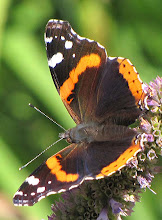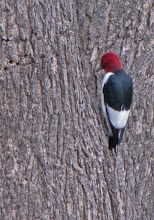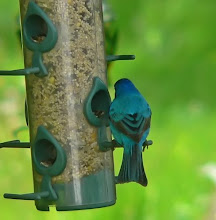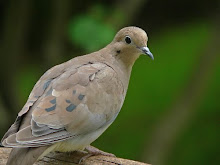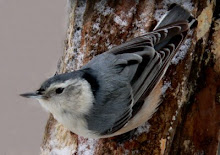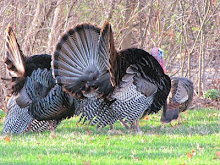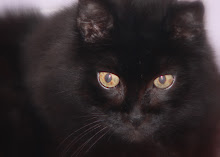
In the photo v. trilobum left growing beside v. opulus right.
Viburnum trilobum is a native American species often referred to as an American cranberry or highbush cranberry. Viburnum opulus is a non native sometimes called a snowball bush V. opulus has a spectacular May flower display but does not produce fruit.
The American cranberry is a fast growing shrub that can reach 12-15 feet high with equal width. Its May flowers are broad, white lacecaps rather than rounded. It has a graceful, airy appearance when in bloom.
Since the lower branches can become leafless and twiggy with age, I pune one of mine into a multi trunked, 15-foot shrub with lower trunks bare to about 3 feet, then branching densely. It can also be kept as a lower growing, more compact shrub maintaining foliage close to the ground. I use the latter pruning method to keep my second American cranberry more in scale with the shorter v. opulus planted beside it.
As its name implies, it produces abundant bright red fruit in late August and September. The fruit usually persists into the winter and is often still clinging to the bushes when the early migrating birds pass through the area. The fruit is safe for humans and is used in jelly. Burgundy red fall foliage provides some late season garden interest.

Depending on how it is pruned, it can create a quick growing hedge or screen. It is hardy in the northern U. S. and well into Canada.
I have experienced no pests or problems with this shrub. Although it is not recommended for drought areas, it has proved well able to handle our 2005 drought which was the areas worst in 75-years.
 The vital force of labor [has] added materially to the highest standard of living and the greatest production the world has ever known and has brought us closer to the realization of our traditional ideals of economic and political democracy. It is appropriate, therefore, that the nation pay tribute on Labor Day to the creator of so much of the nation's strength, freedom, and leadership — the American worker. ~ U.S. D.O.L.
The vital force of labor [has] added materially to the highest standard of living and the greatest production the world has ever known and has brought us closer to the realization of our traditional ideals of economic and political democracy. It is appropriate, therefore, that the nation pay tribute on Labor Day to the creator of so much of the nation's strength, freedom, and leadership — the American worker. ~ U.S. D.O.L.









